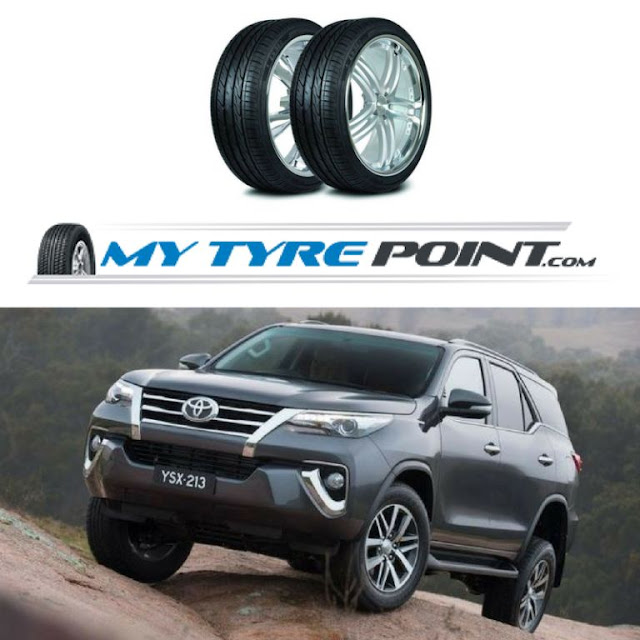When should you switch from summer to winter tyres and vice-versa?
Drivers face the same dilemma every year: when should they change tyres
before winter and when should they get back to summer tyres? It is high time someone answered these questions!
When should you switch from summer to winter tyres?
According to the popular
belief, you should change to winter tyres when the first snow falls. This is
not true! When the first snow falls, you should already have had winter tyres
on for a while. Why so? Because winter tyres are not only there to help you
stay on the road when it is covered with snow. The reason why you need them is
that summer tyres stop providing the right traction when the temperature drops
below 7 degrees Celsius.
A summer tyre is
designed to serve you well when it’s hot; it is there to reduce fuel consumption
and the noise made while driving. When the temperature drops, the rubber the
tyre is made from hardens and the treads which help remove water start losing
their functionality.
As a result, the car
loses traction on wet surfaces. This is the reason why you change to winter
tyres; they are made of soft rubber which does not harden that easily. They
also have a more complex tread pattern where water and snow don’t get stuck
even at low temperatures. In return for this, you get louder driving and
increased fuel consumption, though.
When is the best time
for you to change to winter Car Tyres, then? When the temperature in which you’re
driving drops below 7 degrees Celsius. If you start driving to work at 4 or 5
am., you will need to change to winter tyres much earlier than your neighbour
who leaves home at 7:30 to drive their kid to school.
Are there any specific dates when tyres should be changed?
September or October?
In 2016, the
temperature dropped to 7 degrees Celsius at night already in the 2nd half of
September. During the day, however, it remained higher until the end of the
first week of October. The gap was longer than 2 weeks. As you can see, it all
depends on your lifestyle and use of your car rather than the calendar. If you
consider Central Europe climate, we can safely assume every driver needs
to have their tyres changed by the 2nd half of October.
Of course, it is
unlikely for September nights and October days to be colder than 7 degrees
Celsius. Still, you shouldn’t change tyres last minute. At this temperature,
you will be much safer if you drive with winter tyres on. At the same time, if
it’s 15 degrees Celsius, both winter and summer tyres will offer the same
performance anyway.
What if the autumn is
milder and temperatures don’t drop below 15 degrees even in November? According
to experts, winter tyres show signs of wear a bit faster at such temperatures.
The difference, however, is negligible; it is much better to risk that the
tyres will last you a bit shorter than to be surprised by a sudden attack of
winter when the car still has summer tyres on.
If added safety does
not convince you, perhaps this will: changing to winter tyres early will be
much less troublesome since there won’t be any queues yet. If you’re buying tyres online, you will have more time to choose and order the best model where
it’s cheapest. Leaving this for last minute will force you to rush with the
purchase when it starts snowing; availability will be limited, too.
When should you switch from winter to summer tyres?
April could be quite
warm; during the day, the temperature is 14 degrees Celsius on average.
Technically speaking, you might consider switching back to summer tyres already
in April but we strongly recommend that you wait until May, or at least until
the end of Easter break.
Why so? Because
Easter and the long May weekend mean a lot of driving. It would be a pity if
you woke up on an Easter morning and had to drive your family to the relatives
on snowy roads if you already had summer tyres on. The same applies to the long
May weekend. As we all know, the weather may be fantastic but is may just as
well be awful; it is better to assume it could be either.
When do tyres need replacement because of wear?
Every time you change
tyres, remember to inspect the condition of those you are removing. If you are
changing to winter tyres, do make sure in spring you will still be able to use
the summer ones. This will give you enough time to purchase new ones at a lower
price if you need them; winter tyres are cheaper in spring and summer tyres are
cheaper in autumn.
How can you tell your tyres are too worn to be used?
The first thing you
should check is the depth of the tread. The minimum tread depth allowed in
winter tyres is 1.6 mm. To be safe, you should consider buying new winter tyres
when the remaining tread depth is 4 mm and new summer tyres when the remaining tread
depth is 3 mm.
You also need to
remember to not use tyres that are more than 10 years old. You can check the
manufacturing date on each tyre; if you see the “DOT” followed by some digits,
the last 4 of them will be the week and year when the tyre was made. For
example, 3210 means that the tyre was manufactured in the 32nd week of year
2010.
In general, we
recommend that you change to winter tyres when the air temperature at the times
you’re driving can drop below 7 degrees Celsius; this will most likely happen
in October. Change back to summer tyres in the end of April or the beginning of
May.
Original Source:- https://www.autodna.com/blog/switch-from-summer-to-winter-tyres/





Comments
Post a Comment